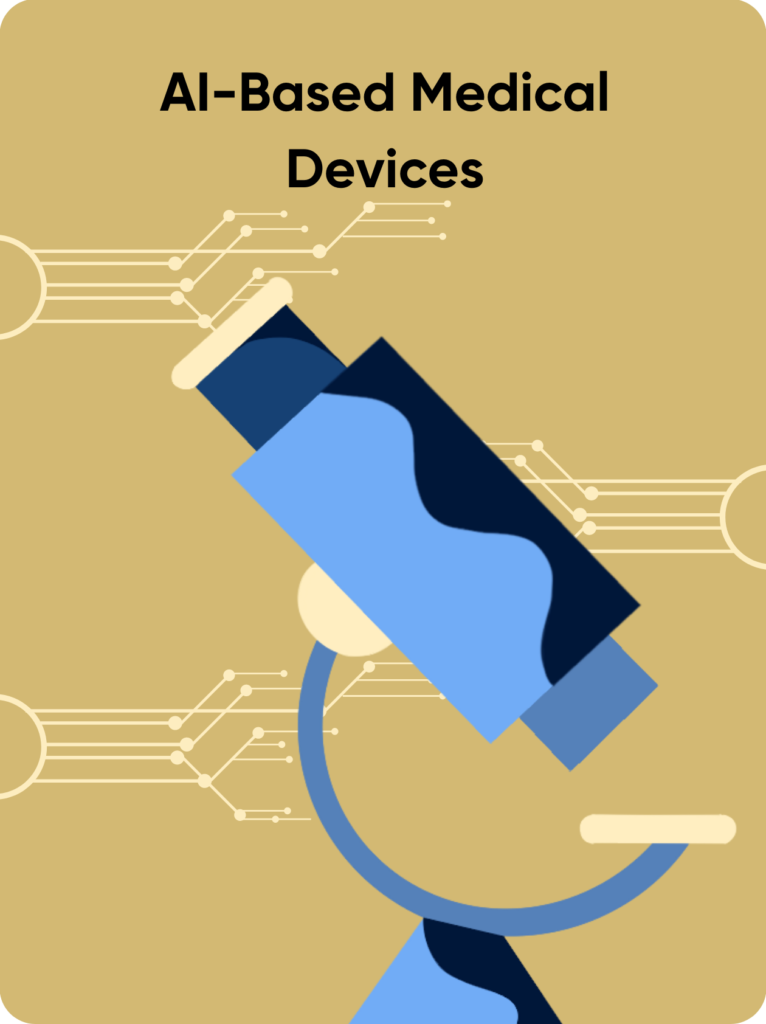The medical devices sector is being transformed by AI. From disease diagnosis to the development of novel medicines. Moreover, AI-powered medical device software has the potential to:
- Enhance patient outcomes
- Lower healthcare costs
- Boost productivity
However, there are also challenges associated with AI medical devices. These include issues surrounding:
- Safety
- Dependability
- Accountability
Despite these challenges, the UK has created regulatory measures for AI medical devices. This blog will explore UK regulatory frameworks for AI-based medical device software.
UK Law Governing the Use of Medical Devices
Firstly, there are two governing legal frameworks in the UK. Namely, the Medical Devices Regulation (MDR) and the In Vitro Diagnostic Regulation (IVDR). They evaluate and approve medical devices across the EU, including in the UK. Additionally, various risk-based classifications divide medical devices.
AI-based medical device software qualifies as a medical device under the MDR and IVDR.
The MDR and IVDR classify the medical device software based on the following:
- Degree of invasiveness of the device
Class I devices are low risk and do not require an independent evaluation.
Class IIa, IIb, and III devices undergo a conformity evaluation from a Notified Body. This government approved third-party organisation judges the efficacy and safety of medical devices.
In addition to the MDR and IVDR, the UK has created its own medical device regulatory system. This is the UK Conformity Assessment (UKCA). The UKCA mark demonstrates that a medical device satisfies UK safety and performance standards. The UKCA mark has replaced the CE mark, which was previously used in the UK to indicate compliance with EU rules.

Regulatory Methods for Software for AI Based Medical Devices
Regulatory difficulties arise from the application of AI in medical equipment. In contrast to conventional medical equipment, AI-based medical device software is dynamic. It has the potential to continuously improve. Consequently, it is challenging to guarantee its safety and functionality for the duration of its life.
Moreover, the UK has created regulatory strategies to tackle AI-based medical device software.
This is a risk-based strategy. It determines the device’s risk level. Then it puts suitable controls in place to minimise the identified risks.
Furthermore, the UK mandates post-market surveillance. This checks that devices meet set standards after a product comes to market. This pharmacovigilance spans any medical products lifetime.
You might be wondering, who bears the responsibility here? Manufacturers are responsible for maintaining low-risk devices (Class I devices). If they find any risks, events or incidents, it is their responsibility to report it to a notified body. This procedure helps minimise risks to patients. If an adverse event occurs, it is possible that the product could be pulled from the market entirely.
A Notified Body evaluates Class IIa, IIb, and III devices. These higher risk level devices need regular conformity evaluations. This assessment examines clinical data, the device’s design and its risk management strategy.
The Importance of Pre-market Evaluation and Clinical Evidence
AI-based medical device software in the UK requires pre-market evaluation. A conformity assessment dossier goes to a Notified Body for pre-market approval. The conformity assessment dossier includes:
The intended use of the device
Clinical evidence demonstrating its effectiveness
The risk management strategy
The Notified Body examines the dossier. It then issues a certificate of conformity. This is only after the device’s compliance check, confirming it is reliable and secure.
This guarantees that only reliable devices enter the UK’s market. It is of paramount importance that these devices are thoroughly checked. This is because patient lives depend on these devices’ functionality. It is an area where profitability comes second to safety. The delicate nature of the industry is what makes conformity and approval integral.
Additionally, AI-based medical device software must offer clinical proof of safety. Moreover, clinical trials or data must confirm the device’s security and efficiency. That is why the conformity assessment dossier must contain clinical evidence.
AI based Medical Devices Pharmacovigilance
Regulatory authorities in the UK also carry out post-market surveillance activities. This could involve:
- Monitoring adverse event reports
- Inspecting production sites
- Investigating whistle-blower’s claims
Furthermore, the UK’s regulatory authorities need continued clinical proof of efficacy and safety. This minimises patient risk and establishes trust in AI-based medical devices. Manufacturers must comply with their follow-up plan and track the device’s progress.
Conclusions
Through this article, we’ve discovered how an AI-based medical device’s safety is essential. This is not an industry for mindless profits and careless cash cows. There is a tremendous amount of care that must go into each AI-based software. There are no shortcuts in this industry. Additionally, post-market surveillance is vital to ensuring patient safety is upheld. AI-based medical device software changes throughout its product lifetime. That is both the magic and danger of the product. It is key for companies to monitor their AI-based medical products.
References
https://compliancenavigator.bsigroup.com/en/medicaldeviceblog/innovation-in-regulatory-approaches-to-ai/
https://www.gov.uk/guidance/regulating-medical-devices-in-the-uk
https://health.ec.europa.eu/system/files/2021-04/mdcg_2021-6_en_0.pdf
https://www.imdrf.org/documents
https://www.tuv.com/india/en/en-iso-13485-certification.html?wt_mc=SEA.Ads.Google.IN23_P05_MDT.IN23_P05_MDT_GA.button.0&cpid=IN23
_P05_MDT_GA&gclid=CjwKCAjwx_eiBhBGEiwA15gLNwZ2_4ByvWTlmzlBsYTujvt9vVvLbt6U1qZ8PCU-z9-
ZtePTi0jlEhoCQJkQAvD_BwE
https://www.imdrf.org/
https://assets.publishing.service.gov.uk/government/uploads/system/uploads/
attachment_data/file/1120503/RHC_regulation_of_AI_as_a_Medical_Device_report.pdf
https://imdrf.org/
https://digital-strategy.ec.europa.eu/en/library/ethics-guidelines-trustworthy-ai
https://www.gov.uk/government/organisations/medicines-and-healthcare-products-regulatory-agency
https://health.ec.europa.eu/medical-devices-sector/new-regulations_en








